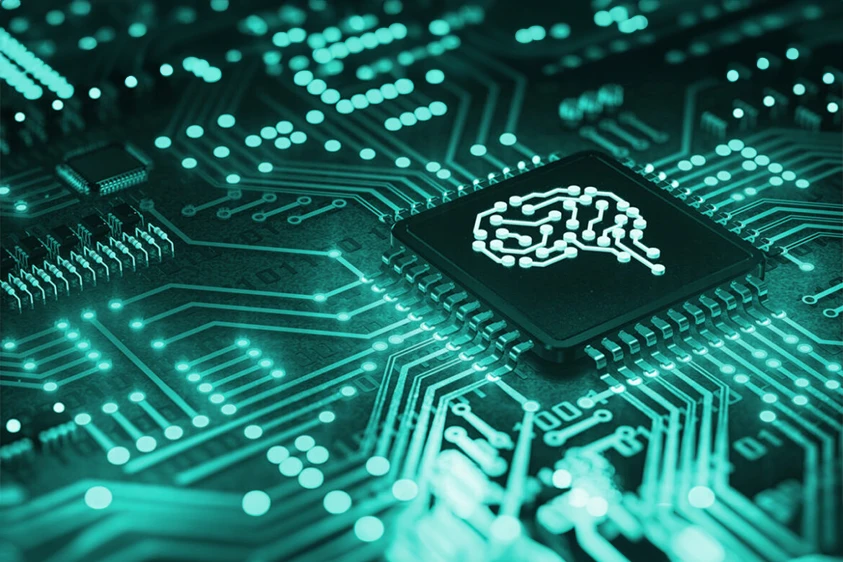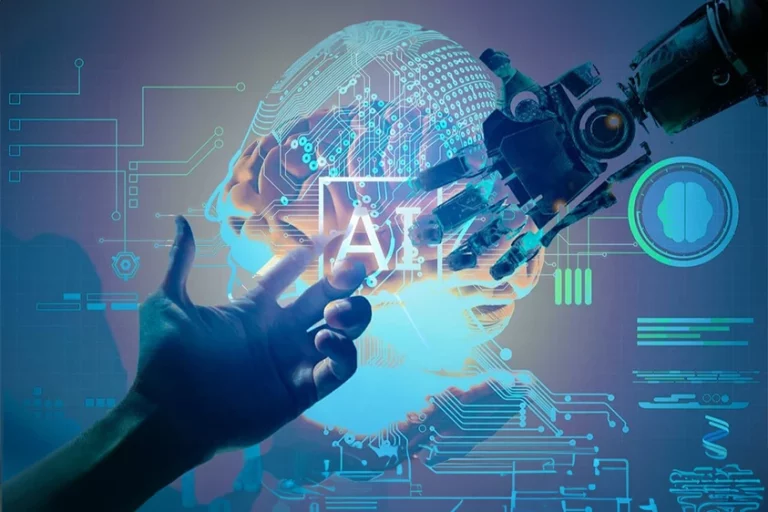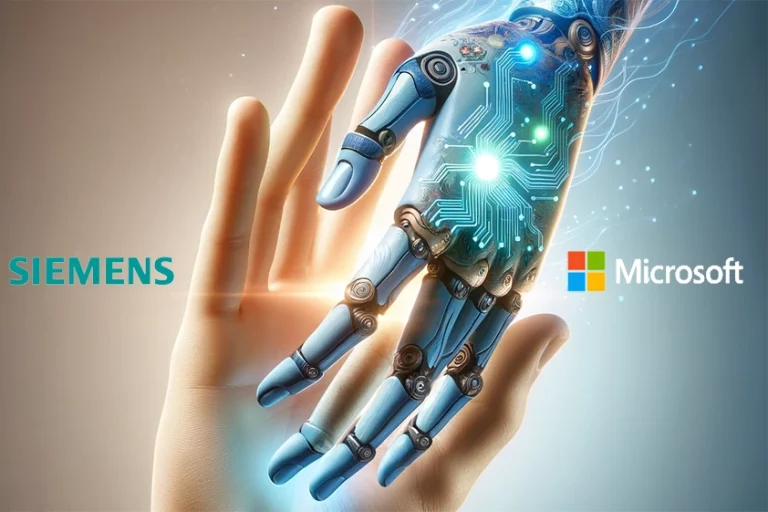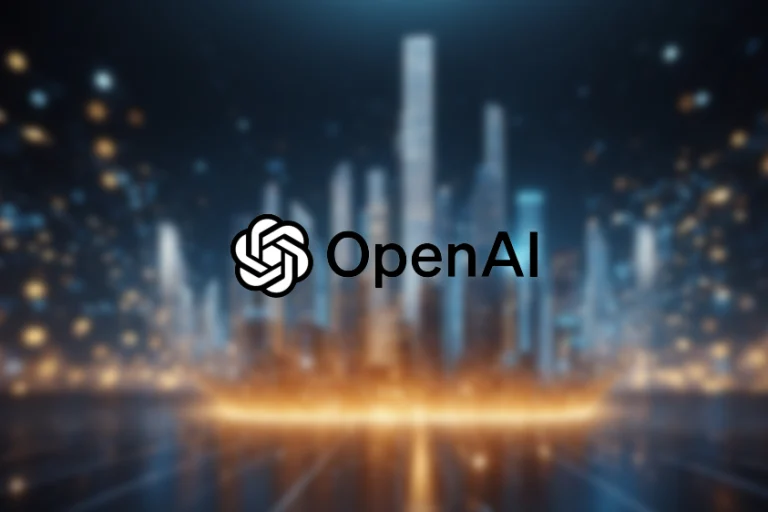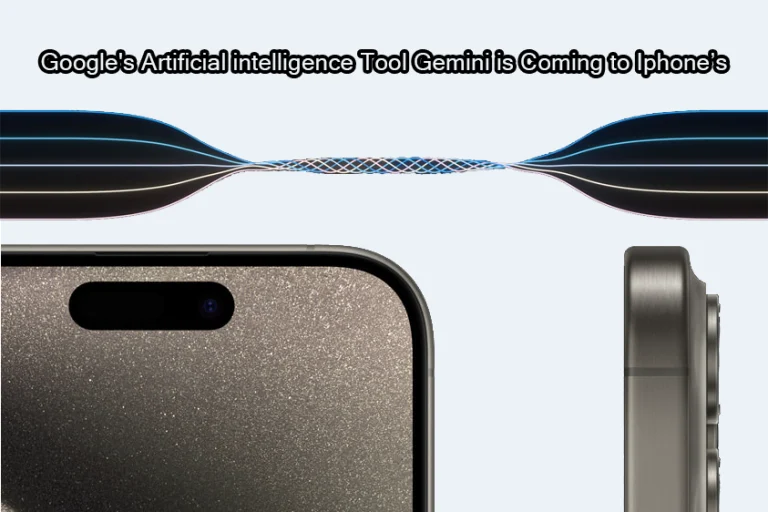Artificial Intelligence is Coming to Computer Processors
With regards to AI as a vast field and a driver of change in various industries, it is gradually entering the chip industry. Some of the most renowned tech companies, such as Intel and Microsoft, are partnering to advance the use of AI in computing (PC) systems, as exemplified by Microsoft’s Build 2023 conference. With Meteor Lake, the mix and match of client PC processors to be released in the future will have AI processing capabilities.
This revolutionary technology does not make your computing experience better. It also redefines the kind of relationship you are likely to have with PCs. With AI processors, your computer is endowed with the ability to solve tasks more effectively, in a shorter time, and accurately. AI programmed into processors means the future of computing will be characterized by the realization of artificial intelligence.
It is just the beginning to incorporate AI into processors, as more leading companies are trying to find ways to incorporate AI with other, more improved technologies, such as photonic chips or hybrid architecture. Before you consider AI as your new opportunity, brace yourself for a new computing experience that will be surreal.
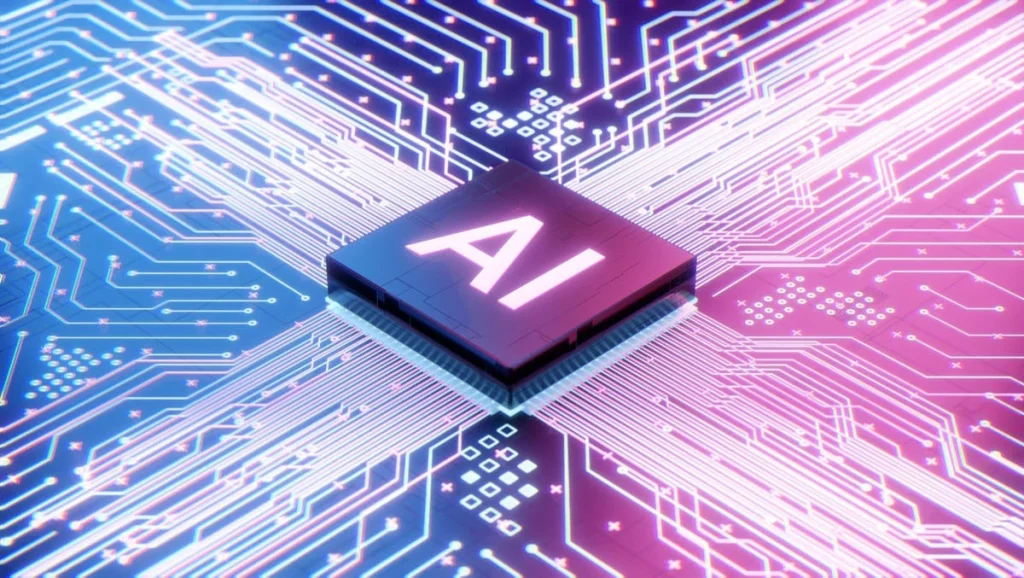
Understanding Artificial Intelligence and Processors
Here is what was understood about artificial intelligence and processors. Artificial intelligence is a branch of computer science that deals with the development of intelligent machines to solve problems that were initially solved through the application of human intelligence. This includes activities such as learning, reasoning, solving problems, etc. The development of AI leads to the requirement for more efficient processors to meet the need for large amounts of data and computation.
An area of application of AI is witnessed in designing microprocessors for computing devices. Conventional processors, or processing units (CPUs), are not efficient in their ways of handling multiple tasks, especially work loads. To address this drawback, there are new processors that incorporate AI, and these are task and parallelism processors, which are prevalent in AI and machine learning applications.
They can be seen in sorts like AI processing units (AI PUs), AI elements incorporated into the AI system of a chip (SoC), or photonic chips. Some of the companies that have featured different chips are AMD, Intel, IBM, Qulcomm, and startups featuring the capabilities and advantages of AI chips. For instance, the α9 AI Processor Gen6 prides itself on the features that improve quality for virtual 9.1. 2 surround sound through the TV itself and its own speaker system.
To increase the efficiency of the application of AI, one is likely to make use of chips such as the GPU or TPU. GPUs are equally well-known for their capacity for parallel computation for tasks that involve data processing, such as machine learning and deep learning. On the other hand, TPUs are aimed at machine learning because of their ability to perform parallelism. These should have higher performance than GPUs while consuming less power than GPUs.
And in RISC V AI chips, people also start to see value in this enveloping era of AI and computing. RISC V is an open-source computer ISA that was first proposed in 2010. Thus, RISC V is gaining popularity due to the features of the instruction set architecture and the ability to advance the creation of AI processors.
In sum, AI is embracing the computing world by introducing solutions for the tasks linked to artificial intelligence. While going forward in AI, further development in processor technology can be expected to cater to these applications’ demand and reliability for your AI operations.
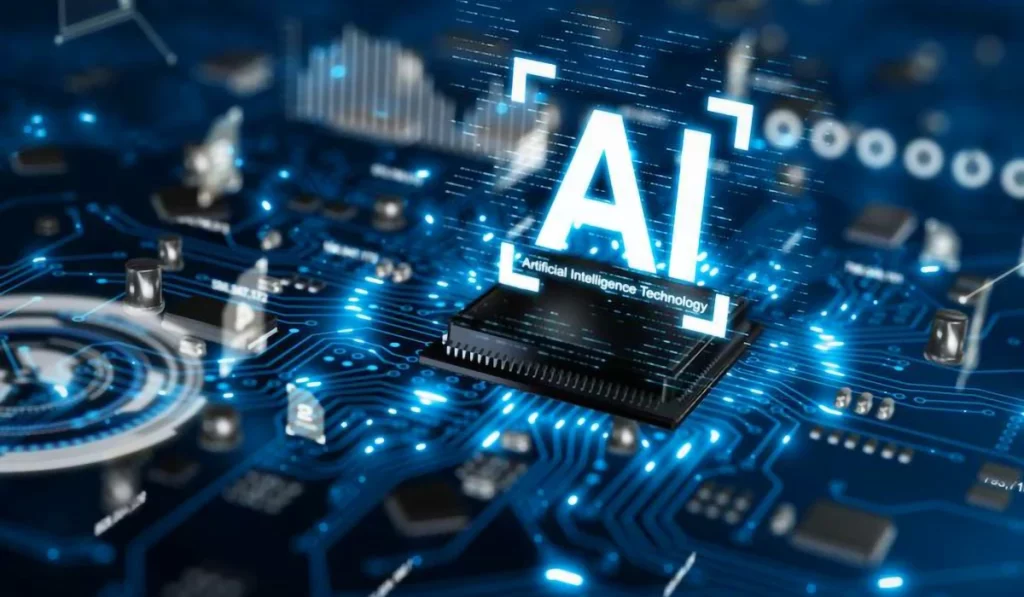
Manufacturers of AI Processors
When exploring the world of AI processors, one is sure to find that there are participants that appear in this market, and all of them bring their implementing novelties. These include Intel, NVIDIA, AMD, Apple, Google/YouTube, Microsoft, Samsung, and Qualcomm.
The high-performance Xeon CPU from Intel has 288 cores and tops AI computations and computer processors. These are also bringing in an AI supercomputer that includes 4,000 Gaudi2 chips. Also, they are eager to introduce Meteor Lake client PC processors that will include a separate VPU dedicated to AI models’ execution.
Another company that may be named in this category is NVIDIA. This company provides different solutions and application services specialized in accelerating the implementation of AI. Their GPUs and sophisticated Tensor Cores have expanded the learning and artificial intelligence research opportunities for worldwide organizations.
There is also AMD’s Radeon Instinct, which is focused on AI hardware. Leveraging HPC solutions, these sectors, such as data centers and research institutes, can get deep learning.
Apple is known for its products, primarily its gadgets and technological advancements. Has incorporated into its products integrated AI processors. Out of them all, this one seems to have it because, in it, Apple has integrated both the CPU, GPU, and neural engine all in one. This integration enables AI tasks and machine learning to be run directly on the device.
Heading towards software-hardware convergence, there are some chips developed by Google called Tensor Processing Units (TPUs) that are designed only for machine learning operations in data centers. These TPUs introduced speed and efficiency, which can be seen as Google’s adherence to the development of AI.
A recent addition to the competition among AI hardware makers, Microsoft continues to work on its AI supercomputers for Azure. These are custom-designed devices, and they employ FPGA accelerators. The intent should be to provide machine hardware that is optimized for AI operations.
Another player in the industry is Samsung, which is getting involved in the sphere of AI processors as well. For instance, their Exynos chips, which are used in most of their gadgets, have been boosted with Neuero Processing Units (NPUs). This integration helps in enabling efficient computation of all the AI-related tasks in different applications.
Basing our study on the historical performance analysis of Qualcomm, we can indicate that it is reputable for its Snapdragon processors, which very effectively integrate the main AI element through hexagonal digital signal processors. Different pathological AI processors are integrated into their boards. This will allow devices to implement true real-time artificial intelligence as well as machine learning.
Now, it is rather evident that the field of manufacturing processors for AI is quite diverse. Every firm deploys its resources to fund research and development aimed at providing effective and superior AI processing capacities in a multitude of applications that span across platforms and hardware solutions.
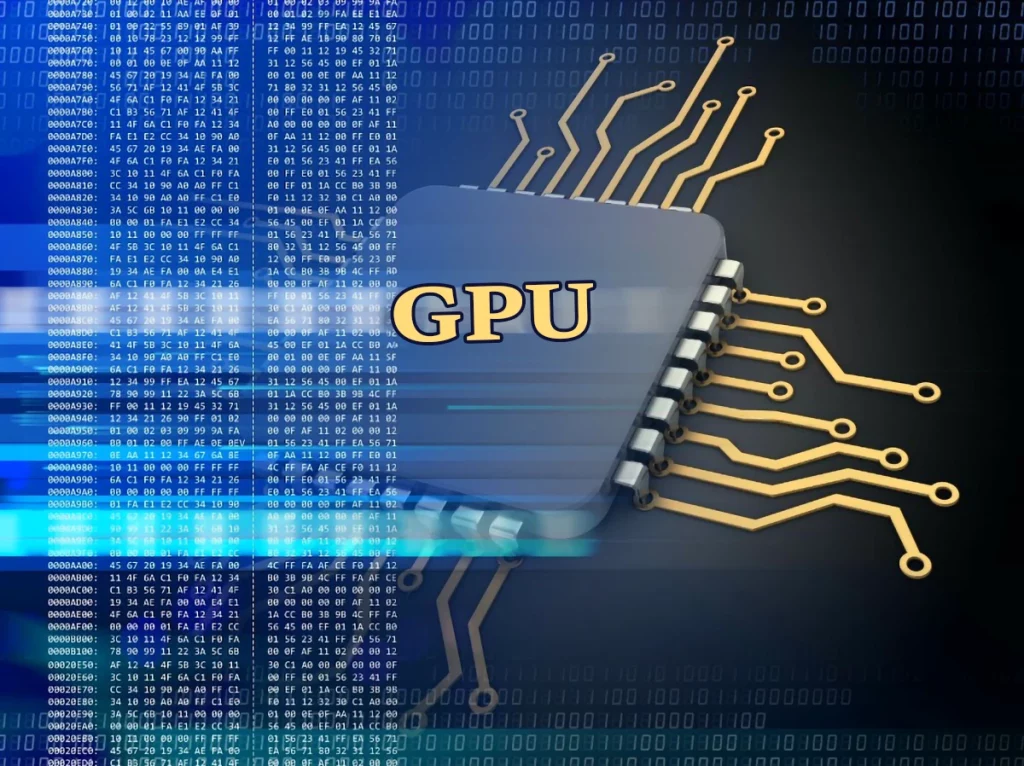
AI in Graphics and Processing Units
In the case of intelligence, it is necessary to review the position of graphics and processing units, or GPUs. GPUs are now the key enablers of AI algorithms,.machine learning and high-performance computing. Earlier, using the latest processors, such as the Core i9 or the highest-range processors involved in machine learning, was slow, inaccurate, and lacked power for today’s AI. Therefore, the discovery and integration of GPUs have substantially impacted this field and paved the way for the improvement of large-scale neural networks and AI.
Several firms are now inventing AI processors alongside graphics chips or photonic chips that are meant to be more efficient and effective in AI uses. Nvidia is probably the best illustration: this trillion-dollar chipmaker is a leader in the AI industry, with its A100 and H100 GPUs in great demand. These now powerful GPUs offer the performance enhancements that fuel the AI evolution further.
In addition, Intel has recently launched the Intel Developer Cloud, which lets developers easily optimize and deploy AI as HPC applications on their newest processors, graphics cards, and accelerators. This cloud service offers the latest tools for boosting AI outcomes and creativity in various fields.
GPUs have entered the mainstream because of the growth of the AI business and the subsequent need for these devices. Therefore, AI startups and investors are trying to find GPUs to support their applications and products. The market for GPUs is growing as more industries require AI for operations and services in the healthcare, banking, automotive, and media industries.
Summarizing, it can be stated that GPUs as well as AI processors contribute to the evolution and promotion of intelligence solutions. Because of this, as AI continues to advance, these companies and researchers use these hardware components to advance the limits of innovation and ways of problem solving. Therefore, while you are immersed in AI, it is necessary to keep track of the updates in GPUs and AI processors, as they will define the further trends of the rapidly growing technological sector.
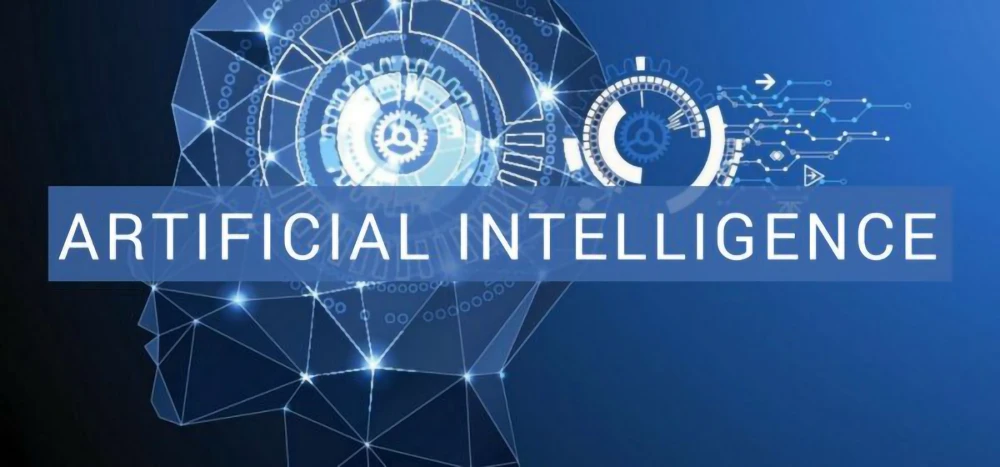
The Future of Hardware Manufacturing in Relation to AI
Alongside this, AI is strengthening changes in various industries and continues to advance in the realm of hardware production. Thus, the future of hardware manufacturing in connection with AI and new technologies and capabilities that may appear in the future also seems quite favorable.
Of the changes that are continuing to occur, integrating intelligence into the design and development of computer processors is one of the most exemplary. Currently, there is a trend toward the use of chips that work on artificial neural networks to improve productivity, speed, and functionality. Cognitive processors, also known as AI chips, can enhance the processing of machine learning-related tasks by designing faster chips to process data.
The development in the material sciences and transistors is also contributing to AI hardware manufacturing. Transistors are the components from which processors are made; thus, the size and efficiency of transistors determine the performance of chips. For the AI apps, the chip makers are also striving to design transistors that are energy-efficient yet perform well.
One of the emerging trends in the manufacturing of processors is chiplet-based processor manufacturing. When a processor is implemented on a single chip, chiplets subdivide it into smaller, equally competent segments. This makes it possible to fine-tune and incorporate the AI hardware into the designs in a relatively simple manner. Such an approach does not contribute to the improvement of the adaptability of the processor. Also lowers manufacturing costs.
Thus, in order to maintain leadership in this environment, the companies producing hardware must continue to developChip makers and hardware manufacturers must be among the pioneers of new technologies. This is done by partnering with other world-class AI research institutions and players in the market to fuel advancement within this field.
These changes will continue to seep through industries and use cases when it comes to the integration of AI with the manufacturing of the relevant hardware. It will affect how gadgets and frameworks are conceptualized, created, and deployed.
As you delve deeper into this captivating field, it’s important to keep an eye on the following developments and trends: I dare say that they will continue to influence the trends in hardware manufacturing.
Prominent AI Processors and their Performance
Due to the significant development in the field of AI, most chip players are integrating AI components into their processors to offer reliable and powerful processing performances. I will explain certain AI processors and how they are working.
AI processors, in which Intel has a stake. Flexibility as well as high performance are presented in the new Ice Lake as well as Alder Lake architectures from the company. Arm, in Ice Lake, offered a new set of AI instruction sets; the benefit is that some more applications, such as image or voice recognition, are faster. Subsequently, Alder Lake introduced a significant improvement to these chips’ AI framework with the purpose of catering to more complex uses.
Further in the upcoming future, Intel has envisaged the next line of development as Meteor Lake, which is the first Intel client PC processor that comes integrated with the neural Vision Processing Unit, or Intel VPU. This dedicated AI engine will also be plugged into the SoC (System on a Chip), allowing it to easily run the AI models.
Among the explained chips for NVIDIA hardware, ORIN is one of the most significant processors to be used mainly for AI inferencing and deep learning. Due to these performance capacities, the microscope is widely used in the field. Due to the symmetrical processing and fast clock speed of ORIN, it can perform complex tasks that are needed in vehicles and robotics.
Besides these industry pioneers, there have been other companies that have started appearing in the AI processor market as well. An example of such a company is Nervana, bought by Intel, which works on AI accelerators built solely for machine learning. The board’s application of advanced technology greatly improves AI performance for data centers and edge devices across multiple applications.
There are many tools for the development of software solutions, and in the case of AI, the Intel OpenVINO toolkit is powerful. OpenVINO enables application developers to extend the use of learning models using Intel hardware tools, which are CPUs, VPUs, and GPUs. Fortunately, given you have OpenVINO at your disposal, it does not matter which platform you are using since its performance is the best.
From the information provided, you can clearly see that there is a selection of AI processors that may help to improve your computing in various ways. Therefore, it can be said that, if one were to stay updated about the current innovations in this area, such an individual would be in a suitable position to make some determinations on the kind of technology that is most appropriate for his needs. This will eventually help in achieving the best outlook for your AI-integrated applications.
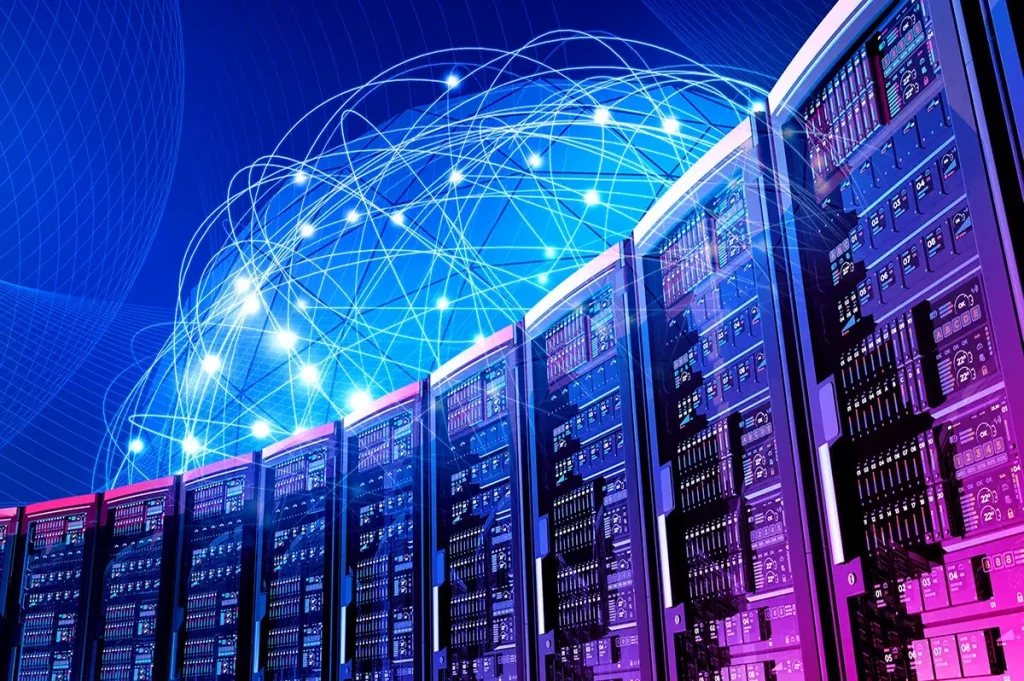
AI in Data Centers and Supercomputers
Modern trends in the AI field are affecting data centers and supercomputers to a significantly greater extent. All these facilities are evolving in order to support the combination of AI processors.
Today, AI and ML find applications in data centers to improve their functionality. By implementing AI in their management systems, they are able to increase consumption efficiency, decrease maintenance expenses, and avoid problems in the future. Further, the use of the processors affects the data analysis and decisions on the efficient use of the resources.
Intel, Meta, and other technologically advanced companies take part in offering AI solutions for the rising needs of this sector. Intel recently introduced “Intel Innovation 2023: Promoting the New Project Named “Bringing AI Everywhere.” The company wants to provide efficient solutions for AI development. Likewise, in the event tagged “AI Infra, @Scale,” Meta also unveiled recent works on AI data centers and supercomputers as they expressed their commitment to supporting hardware and software that catalyzes the use of AI applications.
It is necessary to mention that supercomputers are used for training the AI systems. Are necessary when it comes to dealing with multiple calculations and problems in computations. The Intel-Nvidia battle shows the increasing trend of artificial intelligence chips’ necessity in data centers and supercomputers. The increase in demand for the power offered by supercomputers will still be felt more in the future as the intelligence of AI hits new levels.
In summary, the incorporation of artificial intelligence into computer processing is revolutionizing the market for data centers and supercomputers. These are technological advancements that will enhance efficiency and result in a new age for computing infrastructure. Thus, the goal of this paper is to bring ideas and emphasis into harmony, wherein ideas are key drivers of change and emphasis is a necessity that informs decision-making.
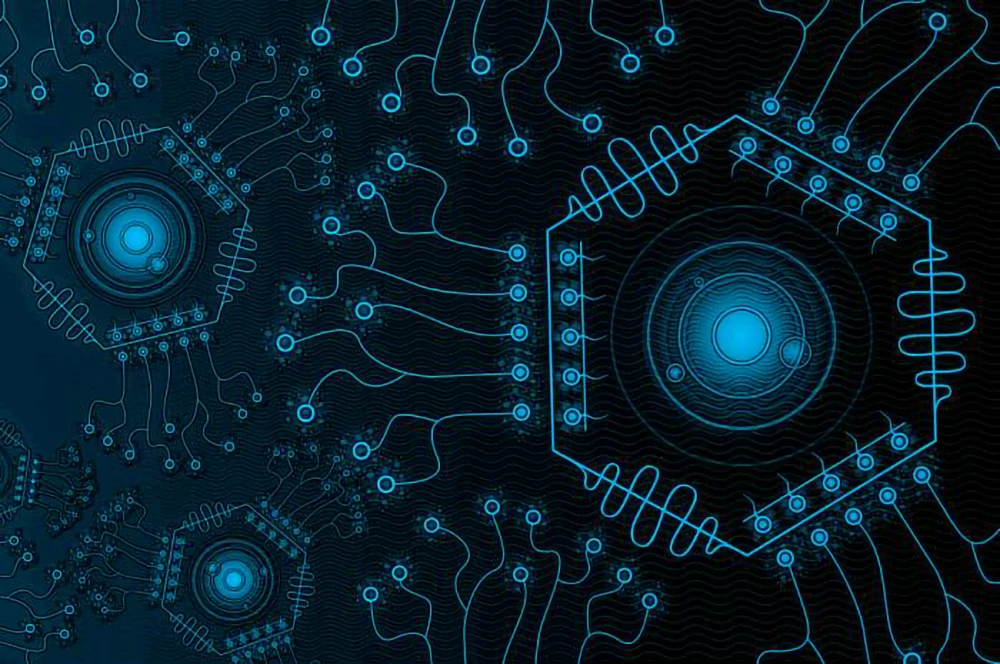
Implications of AI in Edge and Quantum Computing
Regarding applied edge computing, the augmentation with AI can provide a tremendous boost to operations and decision-making in the location of the origin of data. AI algorithms can also be run on edge devices such as sensors and some types of mobile terminals so that the data processing does not have to travel all the way to the large data centers. Faster and more flexible operations would be productive for many sectors, such as production, medical services, and transportation, to work on real-time data analysis quickly.
Nevertheless, there are some issues with the proper integration of AI into edge devices. Issues such as resources and security risks are therefore issues that require consideration. To surmount these challenges, one may have to think more about lightweight and low-power-consuming AI algorithms. Further, there are still strong encryption and authentication methods that provide the needed shield for information.
On the other hand, there are big opportunities for quantum computing to change the state of AI as a performance booster. While classical computers employ arithmetic and logic, quantum computers are based on the use of quantum entities, known as qubits, that employ two quantum mechanics’ principles, which are superposition and entanglement. This enables them to handle large quantities of information at any one time. This development may be applied to problems such as optimization, cryptography, and complicated simulations.
The link between AI and quantum computing leads to more exploration occurrences, new drug discovery in the pharmaceutical market, and the handling of large-scale optimization issues, among other cases. It should be noted, however, that quantum computing is still in its infancy at the current time. Some of the practical applications may need a blend of both quantum computing and other normal computing resources.
Thus, the ideas of the integration of AI, edge computing, and quantum computing are prospective in regard to data management and problem-solving. Thus, learning about these advancements and their consequences does allow for the correct preparation for the further development of computing technology by managing possible threats and optimizing the impact.
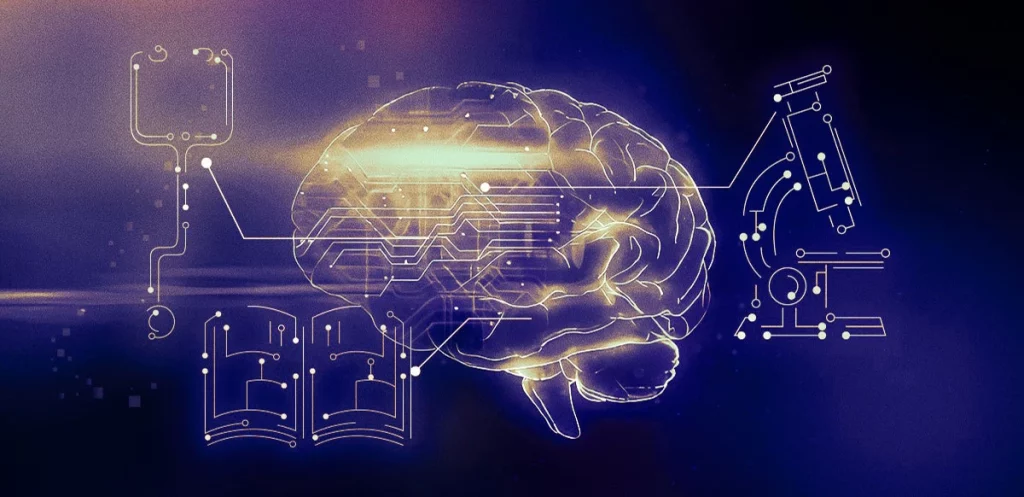
Incorporation of AI in Devices and Other Areas
Role of AI in other fields Apart from the aforementioned sectors, we can see that AI is gradually implanting into devices. The first subtopic revolves around AI in computers (personal computers or PCs), computer processors or CPUs, laptops, display screens, cameras, USB gadgets, iPhones, drones, and the influence of AI over internet standards or web calibers.
AI is revolutionarily embedded in computer processors, including the CPU and the performance of PCs and laptops. These devices can thus analyze large amounts of data with the help of AI capabilities. Make smart decisions. This technology will also be useful in boosting some of the current applications, like games, video making, and even browsing.
A smart device like the iPhone, therefore, is also going through a revolution in functionality: more AI. For instance, these devices come preloaded with artificial intelligence algorithms that can autofocus, select the right lighting conditions, and apply stabilization while in use of their cameras. This allows users to take photos and record videos.
The integration of AI algorithms in drones is being seen in many fields. AI has progressed to the extent that these intelligent devices are now more efficient in path-finding navigation, recognition processes, and avoiding collisions. In addition, the present applications of drones with artificial intelligence are search and rescue, farming, and photographing.
Another application of AI is found in the area of the World Wide Web and Internet protocols. It can be applied when it comes to such activities as the creation of websites, the management of content, etc. Additionally, by using artificial intelligence chatbots in customer service, there is a change in the rate at which the bot is able to capture all the user inquiries and give back the answer.
In a nutshell, the incorporation of AI is already occurring in devices and across segments at an incredibly fast rate and is expected to increase even more in the near future. As the field of AI keeps developing, there is an expectation of development in how man interfaces with technology and how it influences his life.
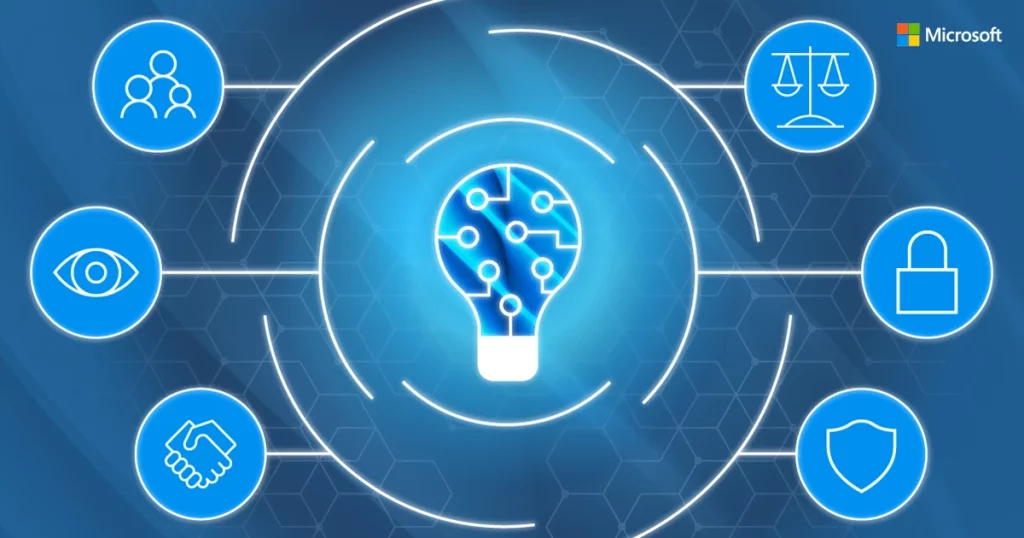
Collaborations and Partnerships in AI Processor Development
Over the years, collaboration and partnerships have been the main thrust behind the development of AI processors. Partially, the technology companies are in a position to provide innovative solutions in the emerging market of artificial intelligence.
A good example of a joint undertaking is between Intel and Microsoft, whereby the two giants are committed to driving the acumen of computing devices. Namely, the Meteor Lake processors designed for consumer personal computers that Intel is currently presenting at Microsoft’s Build 2023 event illustrate what these tech goliaths are doing in the way of bringing AI into computing.
This partnership can be the start of a new computing era that entails endowing the processor’s hearts with AI. This integration will give the devices the ability to learn, to make changes, and to offer an experience to the users. This form of IA integration involves placing IA devices inside the chip structure to make your devices smart, hence enhancing homely computing.
RISC V is another technology where cooperation between producer and customer is present, as Intel joined the RISC V camp. RISC V is an open-source architecture of computer hardware that contains a line of chips for AI that will be used. This 1,092-core AI specialist silicon is already in the hands of partners and has led to a material development deal with Intel.
Through such partnerships, efficiency is improved, and innovation in the creation of artificial intelligence is enhanced. Faster deployment of AI technologies on different platforms and domains. Such collaborations go hand in hand with the development of new AI processor solutions while helping businesses and individuals use AI in their daily lives.
Innovation in AI is still on the rise, and players such as Intel, Microsoft, and RISC V are coming together to demonstrate their commitment to enhancing the AI processor. Reliability and efficiency can be seen to open up possibilities for the search and development of new, well-grounded devices that will significantly change the forms of recreation and people’s communication with the devices.
Various Perspectives on AI and Energy Usage
When advancing to the topic of AI in computer processors, energy consumption and battery life with reference to the impact of the artificial intelligence system also play an important role. The integration of AI with processors denotes that it has benefits as well as harms when it comes to energy consumption.
In one way, the use of AI, in particular the processors, can go further to contribute to energy optimization in the various applications. Smart energy management systems can also learn from the patterns of energy use with the help of an AI algorithm. These systems self-organize energy consumption and therefore help create a friendly, sustainable environment in the future.
Additionally, given the capacity of AI in the analysis of datasets, there can be better predictions in the usage of energy. Be useful in the management of power systems. This has created prospects to establish grid systems that apply renewable energy sources, control supply and demand, and reduce losses.
But it raises questions about the number of energy inputs needed to use AI during the training and running of such algorithms when deep models are chosen. AI with immense models may need power and hence use a lot of electricity in the process. Thus, this can understandably affect battery life and will have implications when the application of AI is incorporated into devices.
However, it is also imperative to look at the energy aspect, which comes with data storage and server farms that are used to support the AI systems. These facilities require the use of substantial power and resources, hence the following questions: More efforts should be directed at trying to solve the energy storage issues and design data centers that are least intrusive.
In conclusion, the discussion specific to the integration of AI in computer processors must take into account the advantages and disadvantages of the use of energy besides battery life. Maintaining efficiency on the one hand and consumption on the other will help in the future because of how AI is impacting energy systems.
Significance of AI Innovation in Digital Photography and Gaming
The following outlines show how AI technology plays an important role in the enhancement of the photographic and gaming industries. Photographers and gamers may benefit from features or even get the desired convenience with the help of AI technology.
Technology, and more specifically, artificial intelligence, have brought about changes in the processing of images in the photography niche. Large software such as Adobe has integrated AI to help with tasks such as editing, erasing objects, and smart cropping, among others. This has favored photo editing in as much as it has favored the generation of images because of its ease of creation.
However, there is a growing and emerging usage of art generated by AI that goes beyond the purely technical style of image editing. And these technologies are capable of producing something new out of the current information and copying the ideas of humans. This left potential for expression and image generation while, at the same time, removing the necessity for profound technical skills.
The influence of this phenomenon in the sphere that concerns us, the gaming industry, is felt most of all. Even from the character behaviors to the adapting environment, AI improves and makes the games even more interesting. Gamers are applying artificial intelligence strategies to the world of video games by designing various game environments that try to adapt to the player’s style and present him or her with engaging and challenging tasks.
Gaming services have also not remained backward when it comes to enjoying the impact of AI. Recommendations can be provided by using algorithms, and matchmaking can be designed and improved for effective communication between the players. All these boosters make betting fun and entertaining for you.
Briefly, AI advances are relatively revolutionary, both in the field of photography and in the field of video games. Meanwhile, the application of AI will help extend the possibilities of photography for you while the gaming industry and LeWitt’s experiment continue forward. With advancements in technology, you can expect even more advancements to be made in these fields.
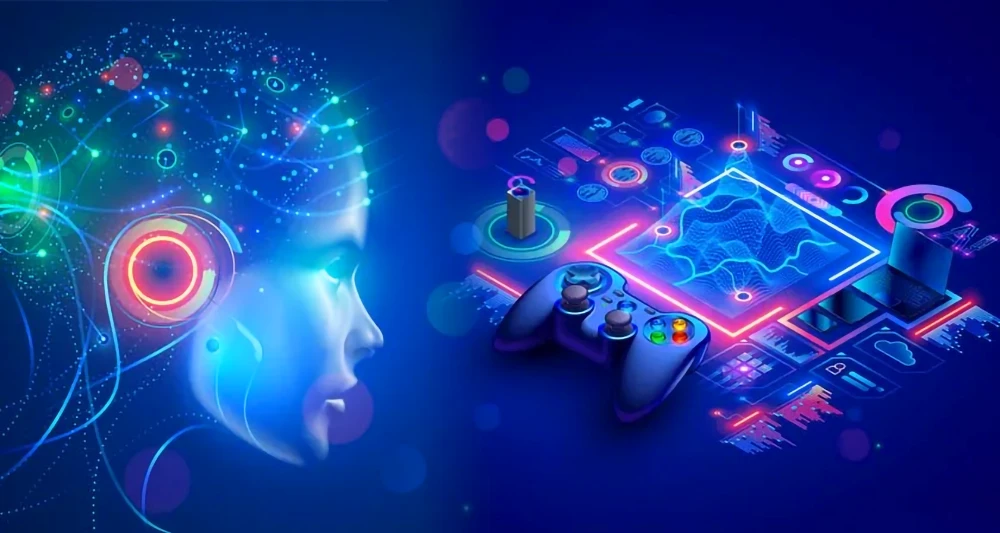
Conclusion
It should be noted the attempts and spendings made by such companies as Intel, which come to the creation of millions of chips with AI cores, therefore actively working on the AI scale up. This continues to drive the scalar up and could lead to another revolution in the manner in which computers work and interact.
One major thing to learn from this is that AI is no longer a field restricted to computers and the cognitive domain but is instead incorporated into all fields, including science. Thus, to achieve the best results for the development of sophisticated AI, it is necessary to solve these and many other problems, which will allow us to create a world where intelligent technologies will be maximally useful for humanity.
In summary, it is possible to expect progress in various fields as AI is incorporated into computing. Here, new and exciting innovations are being developed, which shows that not only will the mark achieved by our devices improve, but their ability to do so will also improve.
Frequently Asked Questions
What can we expect from Intel’s processors with AI capabilities?
Currently, Intel is still in the planning and development stages of processors with AI built-in, such as Meteor Lake. The specific processor that is being advertised has an AI engine. Next year, Intel is likely to ship millions of units of the Meteor Lake. They expect that as they produce additional generations of the products, the effect and size of the AI-espoused processors will fundamentally increase.
What sets analog AI apart from AI?
The two types of artificial intelligence are analog AI and digital AI. Both are used to integrate intelligence into hardware. Digital AI is implemented using computing techniques and is based on logic together with fast switching transistors for data processing. On the other hand, analog AI wants to emulate the brain’s functionality with the help of electrical signals that resemble neuron activity. Despite the fact that, as was already mentioned, there can be some benefits to using analog AI, which exposes less energy consumption and higher speed, in some cases it may be less accurate than AI and can be defined as sensitive to noise.
Do AMD and Intel compete in the market for AI processors?
Absolutely! As seen, both AMD and Intel are involved in the market for AI processors. A hardware architecture known as the XDNA has been worked out by AMD for the mobile Ryzen chips. Currently, Intel tries to develop processors with integrated AI features like Meteor Lake. This healthy rivalry between the two companies brings out the best in them in terms of innovation. Leads initiatives towards the advancement of hardware, most specifically in the field of intelligence applications.
What does the term Visual Processing Unit (VPU) mean in the field of AI?
A Visual Processing Unit (VPU) is defined as a processor that is specialized for the execution of jobs involving image and video analysis within the framework of artificial intelligence. These VPUs are able to enhance the processing of video and image data, which makes them suitable for applications like auto-tracking, facial grouping, and self-driving cars. Thus, by transferring such tasks to VPUs, the performance of a CPU gets a worthy boost, and energy consumption is also reduced.
How do AI capabilities enhance computer processors?
It is because the AI functionalities are incorporated into the program and computer processors so that they can perform the required functions with more competence than traditional processors. These processors with AI engines and customized hardware designs are useful in AI-driven tasks such as machine learning, computer vision, and natural language processing. Thus, AI-enabled processors bring along aspects such as better performance, less power consumption, and appropriateness in the concurrent computation of algorithm-intensive tasks.
What role does Raptor Lake play in Intel’s development of AI processors?
Raptor Lake is thought to be the successor to Intel’s Meteor Lake processors. Whereas Meteor Lake will be the beginning of Intel’s efforts to create an AI accelerator coprocessor, on top of the development for Raptor Lake, these features are expected to be extended. Therefore, being capable of performing better than the Avenson collection and packing additional AI capacity, the Raptor Lake is set to take part in Intel’s attempts to make AI a standard component of computer processors.

